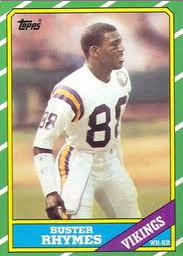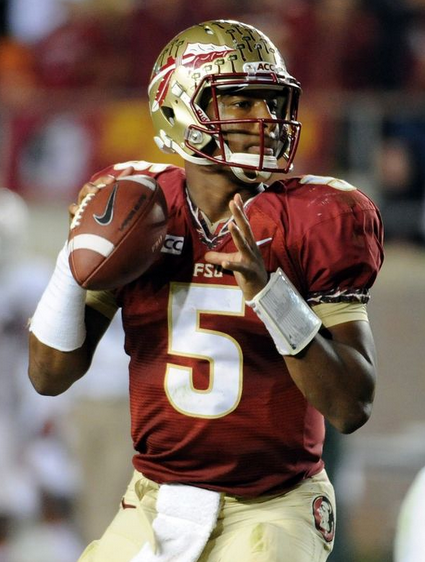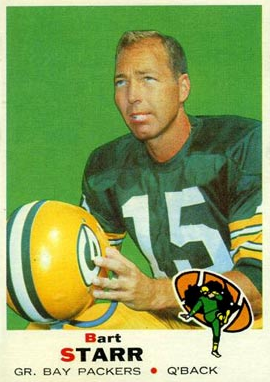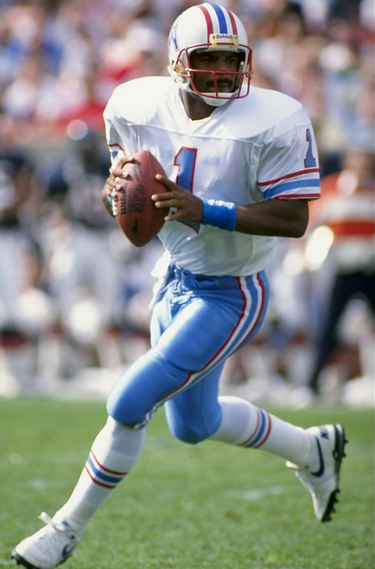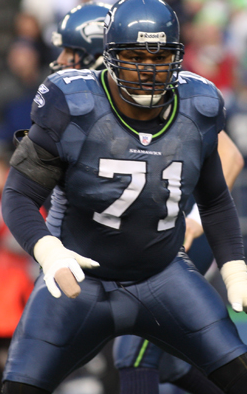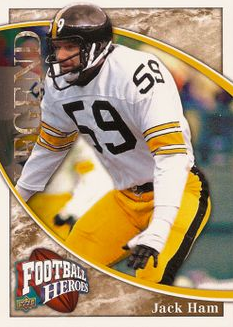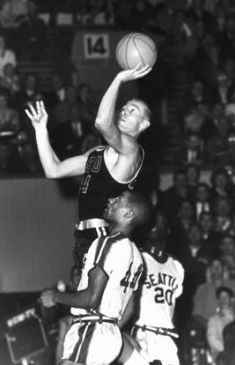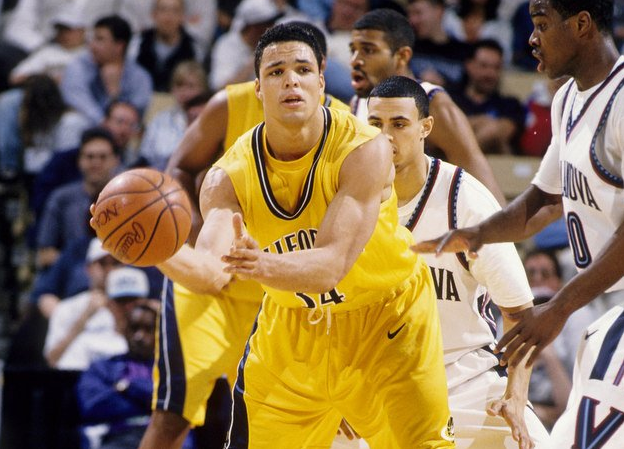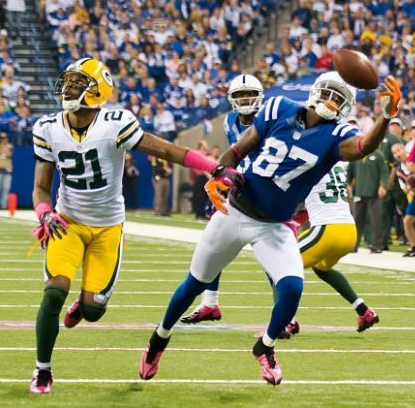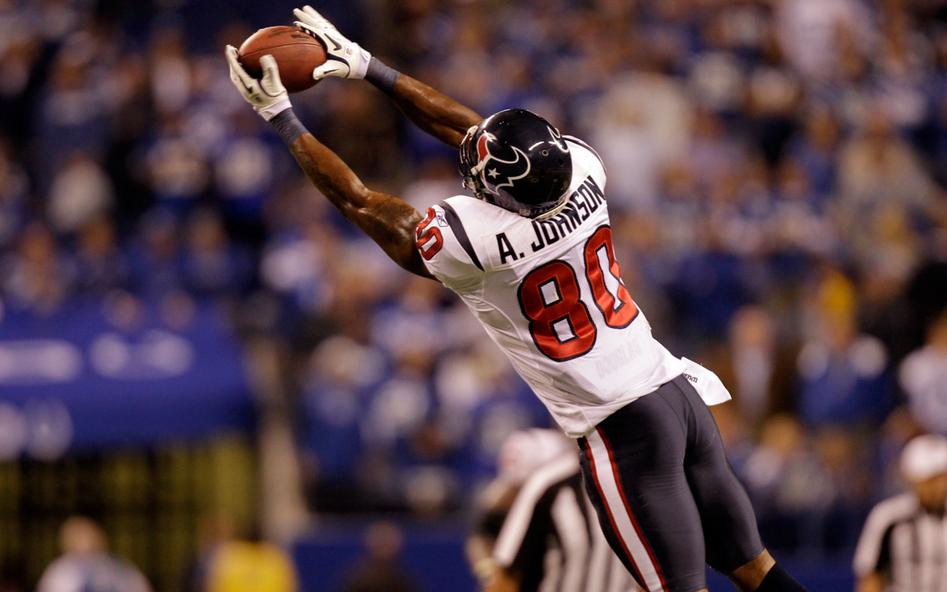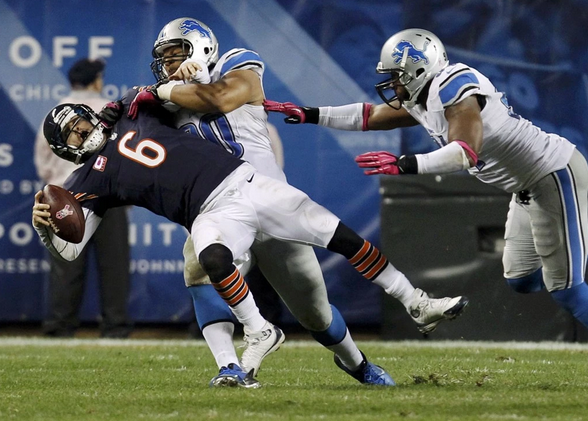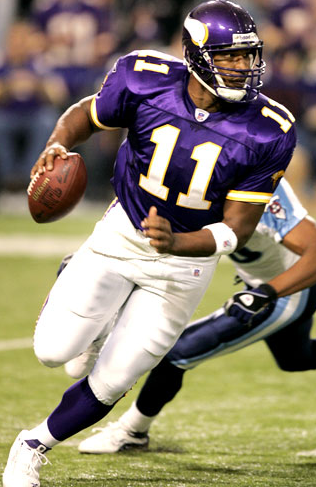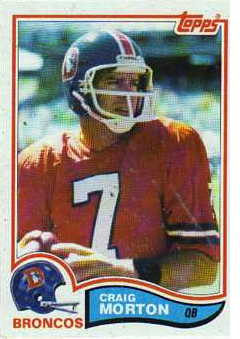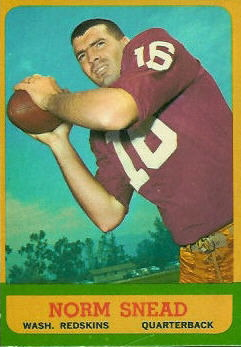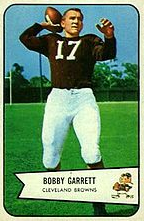With the draft in the books and the Slow Season officially upon us, let’s have a little fun today and revisit one of the more underappreciated games in pro football history: Super Bowl IV — the last between those sworn enemies, the NFL and AFL, before they merged into the colossus that bestrides the sports world.
Happily, the Chiefs’ 23-7 win over the Vikings can be viewed in its entirety on YouTube. It’s the Canadian (CBC) telecast (as is clear from the commercials, one of which stars hockey legend Bobby Orr). Warning: There’s no telling how long the video will be available, so try to watch it before the Copyright Police springs into action. You won’t be disappointed.
We’ll get to The Game Itself in a few moments. But first, allow me to pay homage to the Chiefs defense, that group of Eleven Angry Men who backboned their run to the Super Bowl — and smothered the Vikes therein. When great defenses are discussed, you don’t always hear much about the ’69 Chiefs, and that’s a shame. After all, five members of the unit have been inducted into the Hall of Fame, and a sixth, free safety Johnny Robinson, should probably be in Canton, too. (He was a finalist six straight years in the ’80s but, for reasons known only to the selection committee, wasn’t able to break through. Maybe he’ll make it someday as a veterans candidate.)
Anyway, the defense was never better than it was that year. In 17 games — 14 regular season, three postseason — it allowed just 18 touchdowns (eight rushing, 10 passing) and a mere 11.6 points a game. In the playoffs, the Kansas City ‘D’ was even more amazing, holding the Jets (quarterbacked by Hall of Famer Joe Namath), Raiders (QB’d by Daryle Lamonica, who led the AFL with 34 TD passes) and Vikings (QB’d by Pro Bowler Joe Kapp) to a total of 20 points (two TDs, two field goals).
Check out these numbers: Against the Chiefs, those three estimable quarterbacks had a combined passer rating of 21 (113 attempts, 48 completions, 42.5 percent completion rate, 0 touchdowns, 10 interceptions). Granted, it was a different game then, one in which the defense had more of a fighting chance, but the Kansas City ‘D’ was phenomenal by any standard.
Consider: Opposing passers had a postseason rating of 31 against the 2000 Ravens, arguably the best defense in the last 25 years (at least). For the ’85 Bears, the rating was 39.2. For the ’86 Giants, it was 48.5. That should give you some idea of how otherworldly the ’69 Chiefs were.
Then again, maybe I should just introduce you to these guys individually. That’ll give you an even better idea of how loaded the ’69 Chiefs were.
● LE Jerry Mays (6-4/252, 30 years old) — Seven Pro Bowls (or AFL All-Star Games, as the case may be). Played 10 seasons.
● LT Curley Culp (6-2/265, 23) — Hall of Famer. Six Pro Bowls. Former NCAA heavyweight wrestling champ (read: knew leverage like nobody’s business). The Broncos drafted him in the second round in 1968, tried unsuccessfully to turn him into an offensive guard, then traded him to the Chiefs for a ’69 No. 4 (OG Mike Schnitker). How’s that for a deal? Played 14 seasons.
● RT Buck Buchanan (6-7/270, 29) — Hall of Famer. Eight Pro Bowls. An absolute monster. Played 13 seasons.
● RE Aaron Brown (6-5/255, 26) — Second team all-AFL by The Sporting News in 1969, first team all-AFC by The Associated Press in ’70 and ’71. Wonderfully athletic, disruptive pass rusher who would have had an even better career if it hadn’t been for injuries. Played eight seasons.
● LLB Bobby Bell (6-3/228, 29) — Hall of Famer. Nine Pro Bowls. Simply one of the best players in pro football in that period. Returned six of his 26 interceptions for touchdowns, tying him for most by any modern linebacker. Played 12 seasons.
● MLB Willie Lanier (6-1/245, 24) — Hall of Famer. Eight Pro Bowls. Was far from just a run-stopper, as his 27 picks (one more than Bell) attest. Played 11 seasons.
● RLB Jim Lynch (6-1/235, 24) — One Pro Bowl. Consensus second team all-AFL in 1968 and ’69. Played 11 seasons.
● LCB Jim Marsalis (5-11/194, 24) — Two Pro Bowls. Went to the AFL All-Star Game that year as a rookie and was all-pro in 1970. Played eight seasons.
● RCB Emmitt Thomas (6-2/192, 26) — Hall of Famer. Five Pro Bowls. Led the AFL with nine interceptions in 1969 and added four more in the postseason — 13 in 17 games. Only two players have had more than four INTs in a single playoff year. (The Houston Oilers’ Vernon Perry in ’79 and the Raiders’ Lester Hayes in ’80 each had five.) Played 13 seasons.
● SS Jim Kearney (6-2/206, 26) — The only player on the unit who never made the Pro Bowl or the all-conference team. All Kearney ever did was run back four picks for touchdowns in 1972, tying the NFL record (which still stands). Played 12 seasons.
● FS Johnny Robinson (6-1/205, 31) — Eight Pro Bowls. Tied for the AFL lead in 1966 with 10 interceptions and led the NFL in ’70 with the same number. Was a nice offensive player his first two years, racking up over 1,000 yards from scrimmage in ’60 (458 rushing, 611 receiving), then switched to defense and had 57 INTs over the next decade. Played 12 seasons. Again, I ask: Why isn’t this man in the Hall?
One more argument for Robinson: Only four defensive backs have had more than 57 interceptions in a 10-year period. Three are in Canton (Em Tunnell, 73; Paul Krause, 62; Night Train Lane, 58), and the other (Darren Sharper, 58) seemed like a semi-lock for Canton, too, until he was convicted of rape in March. Johnny also had 16 games in which he had two-or-more picks, as many as anybody since 1960. (Krause also had 16 multiple-pick games. No one else has had more than 12.)
To review: Five Hall of Famers (one more than the Steel Curtain Steelers, one less than the five-championships-in-seven-seasons Packers). Nine players who went to the Pro Bowl, another who was twice voted all-AFC and another who, though he didn’t earn any individual honors, has shared an NFL record for 43 years (and may well share it for another 43). And finally, tremendous longevity — careers of 10, 14, 13, 8, 12, 11, 11, 8, 13, 12 and 12 seasons (average: 11.3).
Imagine assembling a defense like that today. On second thought, don’t bother. Given the salary cap, the movement brought about by free agency and the general dilution of the product (six more franchises), it would be nigh impossible. That’s the defense the Chiefs threw at you.
Yeah, they haven’t been back to the Super Bowl since, while the Vikings played in three more in the next seven seasons (and suffered three more crushing losses). But I’ll always believe that, at that point in time, Kansas City was playing defense about as well as it has ever been played. I mean, there were no Gus Frerottes, no Jay Schroeders, no Dieter Brocks on their dance card. They were going against the iron — and shutting them down.
Something else to ponder: Eight of K.C.’s Magnificent Eleven were black (Mays, Lynch and Robinson being the exceptions). The Chiefs, from the beginning, were an equal-opportunity organization. All owner Lamar Hunt and coach Hank Stram cared about was winning. The Vikings defense, by contrast, had four blacks. Don’t get me wrong, the Minnesota ‘D’ — the vaunted Purple People Eaters — was outstanding. I’m just sayin’.
Remember, when the AFL came into being, the Redskins still had an all-white roster and some other NFL teams, notably the Lions, didn’t have the greatest track record in terms of integration. It’s one of the biggest impacts the AFL had on pro football. It brought more blacks into the game.
At any rate, from front to back — and from side to side, for that matter — the ’69 Chiefs defense was one of the all-time terrors. If Buchanan didn’t get you, Bell would . . . or some other member of this illustrious group. Make no mistake: Super Bowl IV was no upset. The Vikings offense was overmatched. And Kapp and Co., I’ll just remind you, were pretty potent. Minnesota put up 50-plus points three times that season. (Of course, the week before K.C. held them to seven points in the AFL title game, the Raiders had dropped 56 on the Houston Oilers. As I said, the Chiefs could strangle the best attacks.)
OK, on to the game — Super Bowl IV at New Orleans’ Tulane Stadium. My thoughts:
● If you’re a pro football lover of a certain age, this final AFL-NFL championship game has a special place in your memory bank. The war between the established NFL and the try-anything AFL produced, for my money, the most entertaining decade in the game’s history. But rather than go off on a long tangent here, let me just say: To fully understand what I’m talking about, you had to be there. Pro football in that era was a weekly spectacular, and it emerged from those years as the No. 1 sport in the nation (to baseball’s continuing chagrin).
Apart from the nostalgia, though, the Chiefs-Vikings collision was the last time the Super Bowl was truly an Us-vs.-Them affair. Thereafter, no matter how delicious the matchup, it was Us vs. Us, which, let’s face it, takes something away from the game. No Super Bowl team these days is fighting for the honor of its conference — not the way the Chiefs (twice), Raiders and Jets fought for the credibility of the AFL in the ’60s. And when the worm turned at the end of the decade, it was, for many fans, like finding out the earth wasn’t flat or the sun didn’t revolve around the earth. Jets 16, Colts 7 was that cataclysmic.
● The Chiefs were such a cutting-edge team — a modern team. Never mind their dozen black starters, they also did a lot of pre-snap shifting on offense, often played one of their defensive tackles over the nose of the center (to the detriment of the Vikings’ undersized Mick Tinglehoff), had a lethal soccer-style kicker in Hall of Famer Jan Stenerud (when soccer-stylers were still in the minority) and even formed their offensive huddle unconventionally (with two lines facing quarterback Len Dawson: larger creatures in back, smaller creatures up front).
Here’s Culp blowing by Tinglehoff (who’ll be enshrined in Canton in August) to stuff a running play:
Watching Kansas City play in those days was like visiting Tomorrowland. The Chiefs were nothing like the ultra-basic Packers clubs coached by Vince Lombardi earlier in the ’60s (who served as a model for the ’69 Vikings). For instance, the Chiefs might not have reached the Super Bowl if they hadn’t sprung star receiver Otis Taylor for big gains against the Jets and Raiders by using a funky formation — with Taylor in the slot between the guard and tackle. And they tricked the Vikes three times by running end-arounds with their other wideout, Frank Pitts (who they positioned, in each instance, as a tight end on the left side). The first went for 19 yards and set up a field goal:
Minnesota, on the other hand, just lined up and came at you. Unfortunately, it was hard to do that against a defense like Kansas City’s. Buchanan, Culp, Brown and Mays repeatedly collapsed the pocket, and it seemed like Kapp spent the entire afternoon throwing off his back foot.
● In the brief intro before kickoff, CBS analyst Pat Summerall said Vikings coach Bud Grant had told him during the week “that Kansas City is the type of team — a physical team, a hitting team — that Minnesota has had trouble with throughout the entire year.” The Chiefs’ aggressiveness was certainly evident in the Super Bowl. On consecutive plays in the Vikings’ second series, they absolutely crunched running backs Bill Brown and Dave Osborn when they swung out of the backfield to catch passes, holding them to a pair of 1-yard gains. How often do you see consecutive 1-yard completions in the middle of the field?
At the outset of the second quarter, Marsalis put the wood to receiver John Henderson, causing a fumble that Robinson recovered. K.C. kept right on knocking Minnesota’s socks off.
● It no doubt helped the Chiefs that they had Been There Before, even if their previous Super Bowl experience had been a humbling 35-10 loss to Green Bay. Sixteen Kansas City starters, including punter Jerrel Wilson, had played in SB I. For the Vikings, it was their first time on the Super Bowl stage. And frankly, it showed. From the very first snap, K.C. looked like the looser club.
Don’t forget, too, that while the NFL had been around far longer than the AFL, the Chiefs (born: 1960) were actually older than the Vikes (a 1961 expansion franchise). So this Super Bowl had a much different dynamic than its predecessors.
● Stenerud was a huge factor, booting three field goals — the first a 48-yarder, a Super Bowl record at the time — to stake Kansas City to a 9-0 lead. Fred Cox, Minnesota’s traditional kicker (read: he kicked with the front of his foot, the toes, rather than the instep), had only one attempt in the game, from 56 yards with the wind at his back, and came up eight yards short:
It’s one of the more fascinating subplots of Super Bowl IV: the old way of kicking vs. the new way. Stenerud, a former ski jumper from Norway who was undrafted out of Montana State, was more of a weapon than Cox because he had more range. And Fred was one of pro football’s best in ’69, booting 26 field goals and making 70.3 percent of his tries, both NFL highs. But he kicked only two field goals of 50 yards or longer in his 15-year career and had a success rate of just 36.5 percent from 40 to 49 yards. Stenerud booted 17 field goals of 50-plus yards and was successful 51.3 percent of the time from 40 to 49 yards.
Little wonder that by the end of the ’70s, the vast majority of NFL teams had soccer-stylers.
● Another comment Summerall made: “Kansas City is basically a man-to-man defense in the secondary. Minnesota is primarily a zone defensive team.” This goes back to the Chiefs’ aggressiveness. Their ‘D’ attacked you at every level. Thanks to Thomas’ close coverage, Gene Washington, the Vikings’ Pro Bowl receiver, had only one catch for nine yards — and it didn’t come until the last eight minutes, by which time K.C. was ahead 23-7.
● People always joked about Kapp’s not-so-tight spirals. Indeed, Summerall mentioned that Joe “does throw a ball that wobbles quite a bit.” But the Vikes’ QB really aired it out on a couple of occasions. On an incompletion to Washington late in the first half, the pass traveled 65 yards in the air. It might be the longest throw in Super Bowl history:
● Just before that bomb, Dawson drew Minnesota offside by shifting into the shotgun, which wasn’t seen much back then. He took the snap nine yards behind the line. Play-by-play man Jack Buck (correctly) said it “used to be called the Short Punt [formation].” Yet another example of the Chiefs’ against-the-grain mentality (not to mention a sound strategy against the Vikings’ fierce pass rush):
● Penalties could be so much more punitive in the ’60s. At the start of the second half, Kansas City had moved to its 41 when tackle Dave Hill was caught grabbing Carl Eller, Minnesota’s Pro Bowl defensive end, on a third-and-seven play. In those days, though, the walk-off for holding wasn’t 10 yards, it was 15 — from the spot of the foul, which in this case was seven yards deep in the backfield. So it ended up costing the Chiefs 22 yards and left them with a third-and-29. Ouch.
(Referee John McDonough didn’t announce who the penalty was on, however, because refs weren’t equipped with microphones yet. It was left to Summerall to divine who the guilty party was. Sometimes, Pat just had to make an educated guess. After the Vikings were flagged for a personal foul in the third quarter, he said it “might” have been on linebacker Wally Hilgenberg for giving Kansas City back Mike Garrett “a little shot as he tried to get by him” on a pass route.)
● It was a better balanced game in 1969 — better balanced between the run and the pass, better balanced between the offense and the defense. The run/pass split that season was fairly even — 51.6 percent rushing plays (for the two leagues combined), 48.4 percent passing plays. Last year, with Drew Brees and friends firing the ball all over the lot, it was 43.4/56.6. Maybe you’re OK with that. To me, it’s out of whack (not that we’ll ever go back in the other direction).
The rule changes in 1978 that legalized the use of hands in pass blocking and eliminated bump-and-run coverage — along with other tinkering by the Competition Committee — have turned pro football, increasingly, into a throwing contest. Of course, almost from the outset, the NFL has tried to distinguish itself from college football by giving the offense “a slight edge,” as longtime league president Joe Carr put it. “We are primarily interested in developing a spectacular scoring game,” he said in the ’30s. “We haven’t the pageantry that goes with the college games, hence as a substitute we must offer wide-open play, with frequent scoring.
Over the years, though, that “slight edge” has widened. And when you watch a game like Super Bowl IV, you’re reminded how much. There was simply more uncertainty when Dawson and Kapp went to the air, a larger margin of error. Sure, the defenses had something to do with that — both were terrific — but the rules were also fairer. It was nice, for a few hours, to see the game regain its equilibrium. As much fun as passing is, running the ball is elemental (and, I might add, keeps pro football in touch with its roots).
● On second and 18 from the Minnesota 27 near the end of the first half, the Chiefs ran a draw to Wendell Hayes, who picked up 13 yards. Summerall’s remark: “Excellent call by Dawson.” Oh, right. Quarterbacks were still calling their own plays. How quaint.
It was just another way the game was more balanced: Things weren’t totally dominated, as they are today, by micromanaging coaches. That’s why the TV cameras weren’t constantly focused on Stram and Grant — neither of whom, by the way, wore a headset (a fashion accessory that wasn’t yet in vogue). To a large extent, the players ran the show.
● But not always. The famed 65 Toss Power Trap, which Garrett scored on from the 5-yard line to make it 16-0, was sent in by Stram (via receiver Gloster Richardson). It was a gutsy call, inasmuch as it was third and goal, and was perfectly executed. Guard Mo Moorman came over from the right side to trap Alan Page, the Vikings’ Hall of Fame defensive tackle, and Garrett had a huge hole to run through:
What’s just as notable about the play, though, is that Garrett leaped into Taylor’s arms afterward. Self-celebration wasn’t that common in the ’60s, but you could tell from Garrett’s reaction that that touchdown was, to him, the clincher. Given the way the Kansas City ‘D’ was playing, the Vikings weren’t going to rally from 16 points down:
Needless to say, the Chiefs cheerleaders were excited:
● Every now and then, Page would flash, just to remind everybody he was the baddest defensive player on the planet. Once, Dawson had barely completed a handoff to Hayes before Page broke through and drilled him. The guy had linebacker-type quickness (which figures, I guess, since he was 6-4, 245 pounds):
Earlier, Page had dropped Robert Holmes for a 5-yard loss on a draw and, a short time later, tackled Garrett a yard behind the line. That said, Kansas City guard Ed Budde — with help from his linemates — kept Alan from going totally bonkers, and the Chiefs did everything they could to use his quickness against him by running a bunch of traps, draws and screens.
Page now sits on the Minnesota Supreme Court, so it was amusing to see him lose his temper — not once, but twice. The first time, after drawing an offside penalty, he began jawing at the officials. The aforementioned hit on Dawson soon followed. (Moral: Don’t get Alan mad.)
In the closing minutes, Page got riled again. You couldn’t blame him. The Vikings, 13-point favorites, were going down in flames, and Grant — this shocked me — wasn’t using any of his timeouts to stop the clock. The Chiefs weren’t inclined to Just Get It Over With, though, and, on the first play after the two-minute warning, a third-and-11, Dawson rolled right to pass.
Eller sacked him for a four-yard loss, but Page wasn’t satisfied with that. He dove into Lenny, well after the whistle, as the quarterback lay on the ground, resulting in a personal-foul penalty that enabled K.C. to keep possession:
It was fitting end to the last Us vs. Them Super Bowl, one final bit of animosity before the two leagues clasped hands. Both benches emptied, but not much happened aside from some generic jostling. Then the game resumed, the Chiefs killed the remaining time, Stram was hoisted on his players’ shoulders . . . and pro football was never the same.
● Postscript: Did you notice, near the end, Buck’s plug for The Ed Sullivan Show (which aired that night on CBS)? Among the guests, he said, were Tiny Tim and his new bride, Miss Vicky. (If the names aren’t familiar, Google them. It’ll give you a better feel for where we were as a country when the curtain came down on the AFL.)
In fact, why don’t we have Tim sing us off?
I have just one more thing to add: The Kansas City defense was no “tiptoe through the tulips.”
(And yes, that’s Goldie Hawn who hands him a bouquet of flowers before escorting him offstage.)

